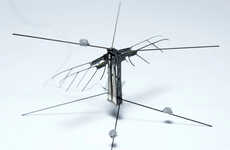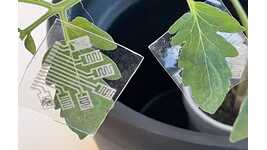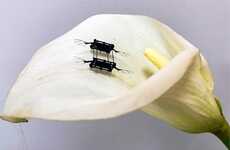
GE Awarded Grant to Develop Bio-Inspired Nanostructured Sensors
Meghan Young — August 17, 2010 — Tech
References: ge.geglobalresearch & psfk
GE Global Research was recently awarded a $6.3 million grant from DARPA to continue their development of bio-inspired nanostructured sensors. Started three years ago, this grant will extend the research for at least another four years.
Essentially, GE has discovered that "butterflies’ wing scales have sharp chemical sensing properties," as Psfk.com reports. By mimicking them, they'll be able to create bio-inspired nanostructured sensors. Although purported to benefit homeland security, it can also be applied to food and beverage safety, emissions and water purification testing.
Essentially, GE has discovered that "butterflies’ wing scales have sharp chemical sensing properties," as Psfk.com reports. By mimicking them, they'll be able to create bio-inspired nanostructured sensors. Although purported to benefit homeland security, it can also be applied to food and beverage safety, emissions and water purification testing.
Trend Themes
1. Bio-inspired Nanostructured Sensors - The trend of developing sensors based on biomimicry is increasing, offering opportunities to replicate the efficient mechanisms of living organisms in technology.
2. Chemical Sensing Technology - Advancements in chemical sensing technology have the potential to improve safety in various industries as well as enhancing environmental monitoring.
3. Nanotechnology Research - Nanotechnology research is becoming increasingly relevant in the development of innovative sensors and materials, providing opportunities for new products and applications.
Industry Implications
1. Homeland Security - Bio-inspired nanostructured sensors could be used for detecting and preventing security threats, providing disruptive innovation possibilities for the homeland security industry.
2. Food and Beverage - Bio-inspired nanostructured sensors could be used to develop more efficient and precise food and beverage safety testing and monitoring systems, creating opportunities for innovation in the industry.
3. Water Purification - Chemical sensing technology could be used to develop more effective water purification and environmental monitoring systems, representing disruptive innovation opportunities for the water treatment industry.
3.4
Score
Popularity
Activity
Freshness























